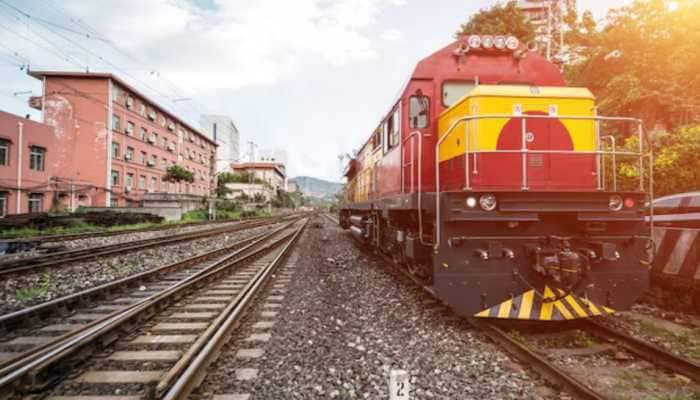ISRO Successfully Launches SSLV-D2 With 3 Satellites Including one From United States; Gets new Launch Vehicle in its Fleet
The SSLV rocket was carrying ISRO's Earth Observation Satellite - EOS-07, Janus-1 belonging to ANTARIS of the US and AzaadiSat-2 belonging to Space Kidz India, Chennai.
Trending Photos
) The ISRO has developed SSLV with a carrying capacity of 550 kg to the Low Earth Orbit (LEO) based on the market trend of going in for smaller satellites.
The ISRO has developed SSLV with a carrying capacity of 550 kg to the Low Earth Orbit (LEO) based on the market trend of going in for smaller satellites. The Indian Space Research Organisation (ISRO) today successfully launched the small rocket, Small Satellite Launch Vehicle (SSLV-D2) from Sriharikota in Andhra Pradesh. The SSLV-D2 was carrying three satellites. The six-and-a-half hours' countdown for the launch of SSLV-D2 (D-Developmental flight number 2) began at 2.48 a.m. today and took off at 9.18 a.m. from the first launchpad at Sriharikota.
The SSLV rocket was carrying ISRO's Earth Observation Satellite - EOS-07, Janus-1 belonging to ANTARIS of the US and AzaadiSat-2 belonging to Space Kidz India, Chennai. The ISRO has developed SSLV with a carrying capacity of 550 kg to the Low Earth Orbit (LEO) based on the market trend of going in for smaller satellites.
The SSLV-D2 was carrying a total weight of 175.2 kg -- 156.3 kg EOS-07, 10.2 kg, Janus-1 and 8.7 kg AzaadiSAT-2 -- as its luggage. The SSLV rocket provides low-cost access to space, offers low turn-around time and flexibility in accommodating multiple satellites, and demands minimal launch infrastructure.
It is configured with three solid propulsion stages and a velocity terminal module. Costing about Rs 56 crore, the SSLV rocket stands 34 metres tall, two-metre diameter vehicle having a lift-off mass of 120 ton, ISRO said.
As to the mission's objectives, ISRO said it is to demonstrate the designed payload capability of SSLV in LEO and injection of three satellites -- EOS-07, Janus-1 and AzaadiSAT-2 -- into the 450 km circular orbit.
According to its schedule, about 13 minutes into its flight, the SSLV rocket first ejected EOS-07 and the other two satellites Janus-1 and AzaadiSAT-2 after a while- all at an altitude of 450 km. The ISRO's live webcast confirmed the successful launch of the satellites marking the successful launch of the small launch vehicle rocket D2.
SSLV-D2/EOS-07 Mission is accomplished successfully.
SSLV-D2 placed EOS-07, Janus-1, and AzaadiSAT-2 into their intended orbits. — ISRO (@isro) February 10, 2023
The SSLV's maiden flight - SSLV-D1- on 7.8.2022 was a failure as the rocket had put the two satellites -- EOS-01 and AZAADISAT -- in a wrong orbit resulting in their loss.
"Congratulations to all 3 satellite teams for making the satellites as well as placing them in right orbit. We had analysed the problems faced in SSLV-D1, identified corrective actions and implemented them at a very fast pace to ensure the vehicle becomes successful this time," said ISRO chief S. Somanath after the mission was accomplished.
(With agency inputs)
Stay informed on all the latest news, real-time breaking news updates, and follow all the important headlines in india news and world News on Zee News.
Live Tv







)
)
)
)
)
)
)
)
)
)
